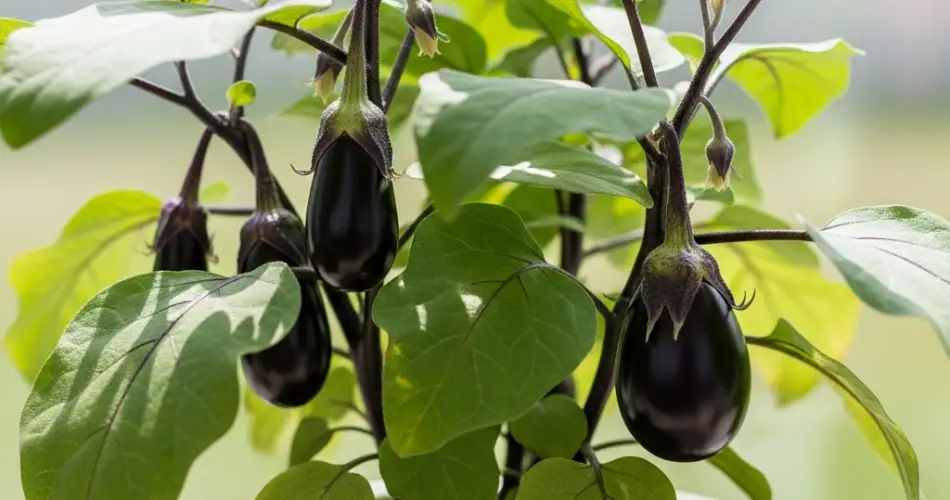Eggplants, also known as aubergines, are not just delicious—they’re also surprisingly well-suited for container gardening. With their lush foliage, striking purple fruit, and elegant flowers, eggplants can serve both as a productive crop and an ornamental plant on patios, balconies, or sunny kitchen corners.
Even without access to a traditional garden bed, you can grow thriving eggplants in your favorite pot. All it takes is the right setup, some basic care, and attention to a few essential growing requirements.
Choosing the Right Container
Eggplants have deep roots and benefit from plenty of room to grow. The minimum pot size for a single eggplant is a 5-gallon container, but for best results, aim for a pot that’s at least 12 inches deep and wide.
Ideal pot features:
-
Made of breathable materials like clay, fabric grow bags, or plastic with drainage holes
-
Equipped with a drainage tray to prevent waterlogging
-
Stable and heavy enough to support the plant’s height and fruit weight
If you’re using a decorative pot without drainage, make sure to drill holes or nest a smaller pot with drainage inside it.
Soil Preparation
Eggplants require well-draining, nutrient-rich soil to develop strong stems and healthy fruit.
Recommended soil mix:
-
2 parts high-quality potting mix
-
1 part compost or aged manure
-
Optional: perlite or vermiculite for added drainage
Avoid garden soil or dense clay, as it compacts easily and may cause root rot in containers. Mix thoroughly and fill the pot to about an inch below the rim.
Sunlight and Temperature Requirements
Eggplants are heat-loving plants. They need full sun—at least 6 to 8 hours of direct sunlight daily. Choose the sunniest spot available: a south-facing balcony, a sunny patio, or a windowsill that receives strong afternoon light.
Ideal growing temperatures are between 75°F and 85°F (24°C to 29°C). Below 55°F (13°C), eggplants grow slowly, and fruit production is limited. If temperatures dip at night, consider bringing your pots indoors or covering them.
Planting Eggplants
Start with healthy seedlings from a nursery or grow your own from seed indoors 6 to 8 weeks before the last frost. Once the plants are about 6 inches tall and nighttime temperatures are reliably warm, transplant them into your prepared pot.
Planting tips:
-
Plant one eggplant per pot.
-
Set the seedling slightly deeper than it was in its previous container.
-
Water well after transplanting.
You may also insert a stake or small tomato cage during planting to support the plant as it grows and bears heavy fruit.
Watering and Feeding
Eggplants need consistent moisture, especially in pots where soil dries faster. However, they don’t like soggy roots.
Watering guidelines:
-
Water when the top inch of soil feels dry.
-
Avoid letting the soil dry out completely or become waterlogged.
-
Use mulch (like straw or shredded leaves) to conserve moisture.
Fertilizing tips:
-
Use a balanced liquid fertilizer every 2–3 weeks.
-
Once flowers appear, switch to a low-nitrogen fertilizer to encourage fruiting.
-
Compost tea or diluted fish emulsion can also support strong growth.
Pollination and Flowering
In outdoor setups, pollinators like bees and butterflies usually do the job. But in small balcony gardens or indoor spaces, you may need to hand-pollinate.
To hand-pollinate:
-
Gently shake the plant to move pollen from one flower to another.
-
Use a soft brush or cotton swab to transfer pollen between blossoms.
Eggplants are self-pollinating, so even a little assistance can lead to successful fruit development.
Pest and Disease Management
Container-grown eggplants are generally less prone to pests, but occasional issues may arise.
Common problems:
-
Aphids – Wash off with water or use insecticidal soap.
-
Spider mites – Increase humidity or apply neem oil.
-
Flea beetles – Use sticky traps or row covers.
Avoid overcrowding containers and ensure good air circulation to reduce the risk of fungal diseases like powdery mildew.
Harvesting Your Eggplants
Eggplants are ready for harvest when they reach a glossy, full size typical of the variety you’re growing—usually between 60 and 80 days after transplanting.
Harvesting tips:
-
Don’t wait until they become dull or overly large—they may taste bitter.
-
Use garden scissors or a sharp knife to cut the stem, leaving about an inch attached.
-
Handle gently to avoid bruising the fruit.
Frequent harvesting encourages more fruit production.
Final Thoughts
Growing eggplants in pots is a satisfying project for both beginner and experienced gardeners. With a sunny spot, a sturdy container, and a bit of care, you can enjoy a bountiful harvest of fresh, homegrown eggplants—even if all you have is a balcony or windowsill.
Whether grilled, roasted, or stewed, nothing beats the flavor of eggplant picked straight from your own container garden.



